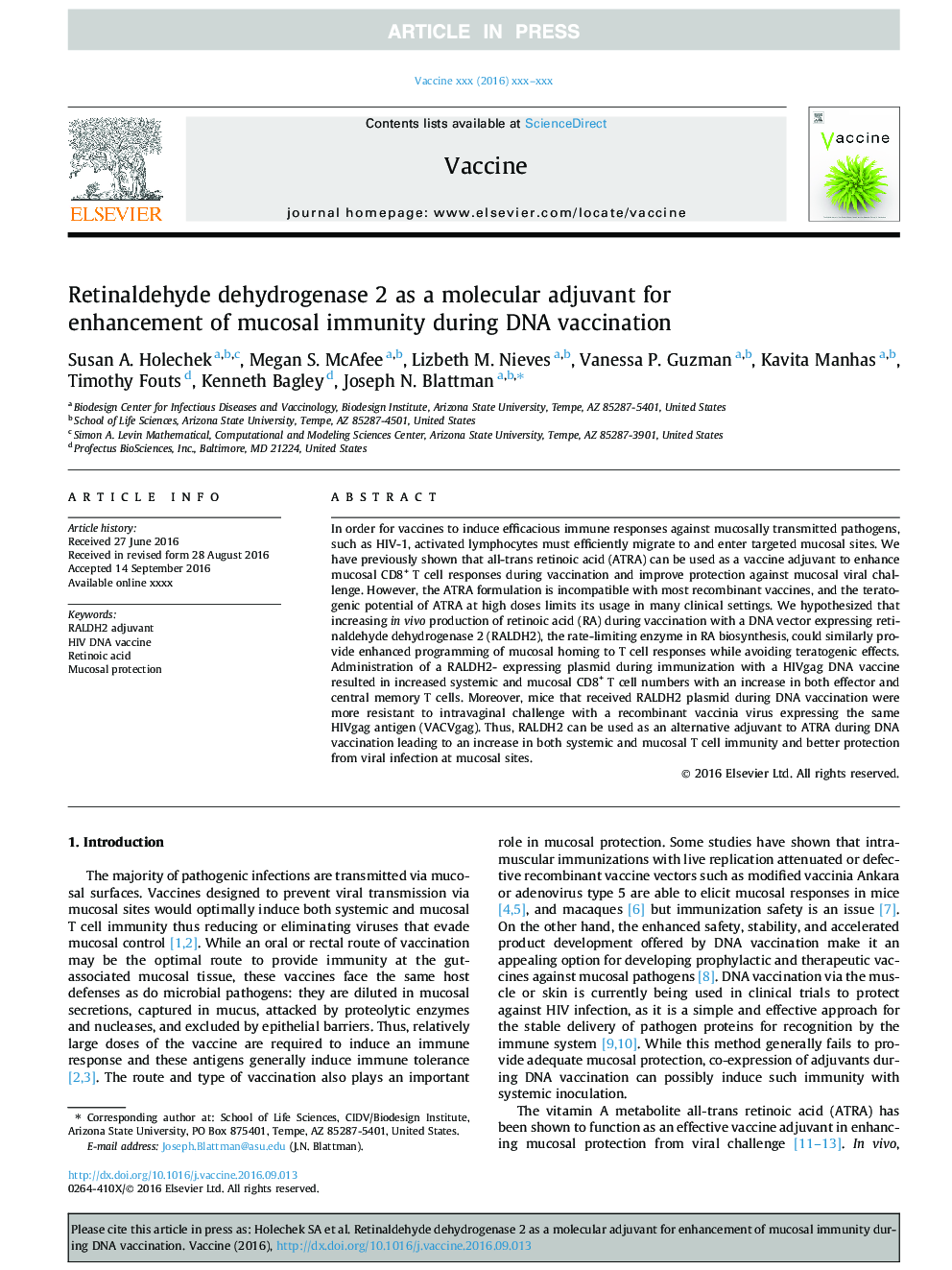| Article ID | Journal | Published Year | Pages | File Type |
|---|---|---|---|---|
| 5537434 | Vaccine | 2016 | 7 Pages |
Abstract
In order for vaccines to induce efficacious immune responses against mucosally transmitted pathogens, such as HIV-1, activated lymphocytes must efficiently migrate to and enter targeted mucosal sites. We have previously shown that all-trans retinoic acid (ATRA) can be used as a vaccine adjuvant to enhance mucosal CD8+ T cell responses during vaccination and improve protection against mucosal viral challenge. However, the ATRA formulation is incompatible with most recombinant vaccines, and the teratogenic potential of ATRA at high doses limits its usage in many clinical settings. We hypothesized that increasing in vivo production of retinoic acid (RA) during vaccination with a DNA vector expressing retinaldehyde dehydrogenase 2 (RALDH2), the rate-limiting enzyme in RA biosynthesis, could similarly provide enhanced programming of mucosal homing to T cell responses while avoiding teratogenic effects. Administration of a RALDH2- expressing plasmid during immunization with a HIVgag DNA vaccine resulted in increased systemic and mucosal CD8+ T cell numbers with an increase in both effector and central memory T cells. Moreover, mice that received RALDH2 plasmid during DNA vaccination were more resistant to intravaginal challenge with a recombinant vaccinia virus expressing the same HIVgag antigen (VACVgag). Thus, RALDH2 can be used as an alternative adjuvant to ATRA during DNA vaccination leading to an increase in both systemic and mucosal T cell immunity and better protection from viral infection at mucosal sites.
Keywords
Related Topics
Life Sciences
Immunology and Microbiology
Immunology
Authors
Susan A. Holechek, Megan S. McAfee, Lizbeth M. Nieves, Vanessa P. Guzman, Kavita Manhas, Timothy Fouts, Kenneth Bagley, Joseph N. Blattman,
